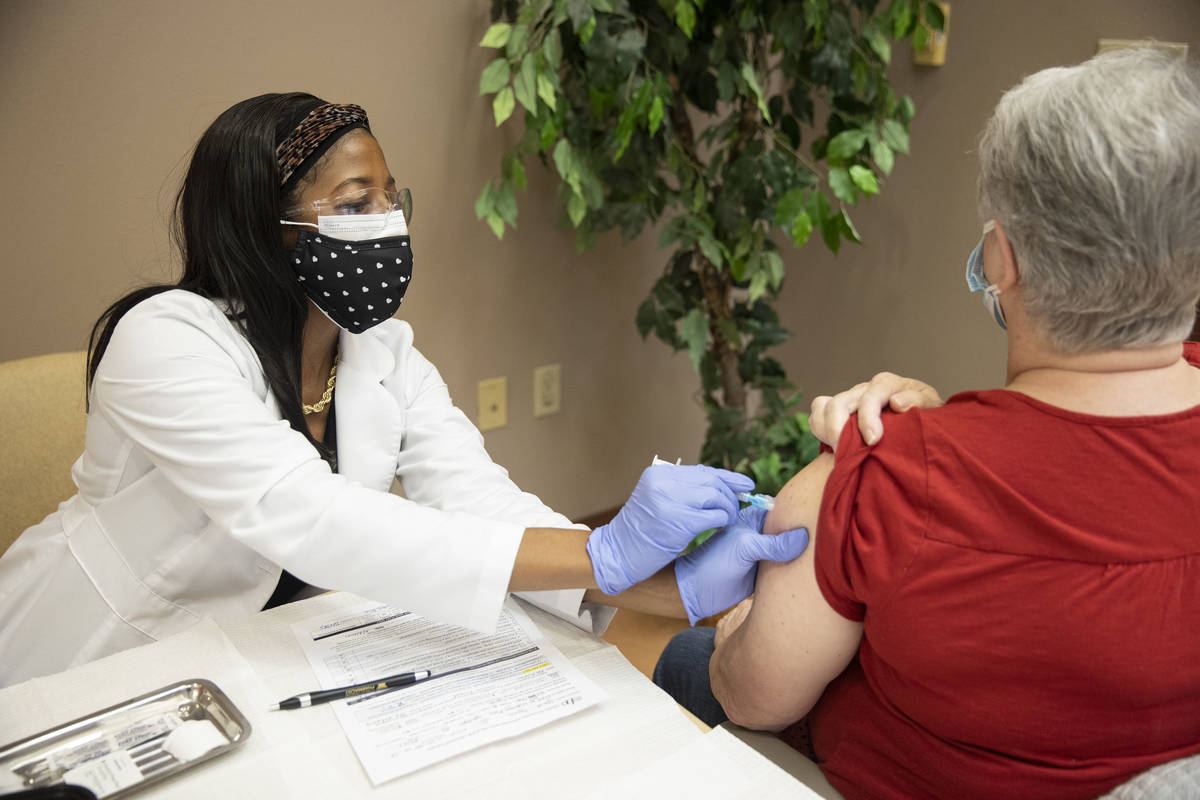Downward trend in Nevada’s key COVID-19 metrics exceeds a month
Nevada recorded higher-than-average numbers of new coronavirus cases and deaths on Friday, but state data shows that all major COVID-19 metrics have now been declining steadily for more than a month.
Updated figures from the Department of Health and Human Services posted on the state’s coronavirus website showed 420 new coronavirus cases and 26 additional deaths Friday. That brought cumulative totals in the state to 290,300 cases and 4,831 deaths.
The 14-day moving average of daily reported cases decreased to 410 on Friday, slightly below the daily total, the state data shows. The rate has been steadily falling since it reached a peak of 2,065 on Jan. 15.
New deaths also were higher than the moving 14-day daily average of 13. But the average has been dropping since it peaked at 39 from Jan. 10 through Jan. 15, according to the data.
Both the state and county health agencies often redistribute data after it is reported to better reflect the date of death or onset of symptoms, which is why the moving-average trend lines can differ from daily reports and are considered better indicators of the direction of the outbreak.
Data guide: COVID-19’s impact on Nevada
Another key yardstick, the state’s two-week positivity rate, continued to decline, falling 0.6 percentage point in the daily report to 10.7 percent, according to the state data. The rate, which essentially measures the percentage of people tested who are confirmed to have COVID-19, is now less than half of the peak rate of 21.6 percent on Jan. 13.
Hospitalizations involving confirmed or suspected COVID-19 cases also have been ebbing, with the 670 occupied beds listed in Friday’s data, down 28 from the preceding day and just over a third of the 1,727 patients who were hospitalized a month ago, state data shows.
Despite the encouraging signs, state officials remain watchful to see how the relaxation of some COVID-19 restrictions this week by Gov. Steve Sisolak and public behavior will affect the metrics.
Caleb Cage, the state’s COVID-19 response director, said at a virtual news briefing Friday that Nevadans should not become complacent about safety measures, noting that previous declines in the metrics have been followed by surges that erased and surpassed those gains.
“We need to make sure that people continue to wear masks; that’s why the governor has kept the statewide mask mandate in place,” he said. “We need to make sure that people are being serious about washing their hands, about social distancing, about all those things.”
“We also need to make sure that our local partners after May 1 are putting in serious plans and mitigation measures to make sure that we don’t have increased spread throughout the state of the virus after that transition occurs,” Cage said, referring to a provision of Sisolak’s plan that will return control of most virus mitigation efforts to local jurisdictions.
Clark County, meanwhile, recorded 336 new coronavirus cases and 25 additional deaths over the previous day, according to data posted to the Southern Nevada Health District’s coronavirus website. The updated figures bought totals in the county to 223,960 cases and 3,749 deaths.
The county’s two-week positivity rate declined by 0.5 percentage point, reaching 12 percent — 1.3 percentage points higher than for the state as a whole, according to state data.
Contact Katelyn Newberg at knewberg@reviewjournal.com or 702-383-0240. Follow @k_newberg on Twitter.
Nevada's vaccine numbers
Adult population: 2.39 million
Doses shipped to state: 645,250
First dose only administered: 242,288
Both doses administered: 138,633
Source: Centers for Disease Control and Prevention; U.S. Census Bureau.


















